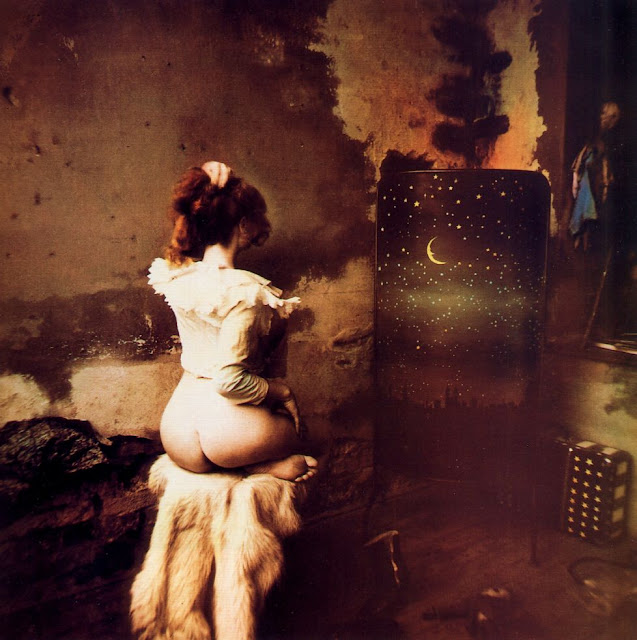Jan Saudek (born 13 May 1935 in Prague,
Czechoslovakia) is a Czech art photographer and painter.
Saudek's father was a Jews and this,
coupled with his Slavic (Czech) heritage, caused his family to become
a target of the Nazis. Many of his family died in Theresienstadt
concentration camp during World War II. Jan and his brother Karel, or
Kája, were held in a children's concentration camp for Mischlinge,
located near the present Polish-Czech border. His father, Gustav, was
deported to Theresienstadt concentration camp in February 1945. Both
sons and father survived the war.
According to Saudeks's biography, he
got his first camera, a Kodak Baby Brownie, in 1950. He apprenticed
to a photographer and in 1952 started working as a print shop worker,
where he worked until 1983. In 1959, he started using the more
advanced Flexaret 6x6 camera, and engaged in painting and drawing.
After completing his military service, he was inspired in 1963 by the
catalogue for Edward Steichen's The Family of Man exhibition, to try
to become a serious art photographer. In 1969, he traveled to the
United States and was encouraged in his work by curator Hugh Edwards.
Returning to Prague, he was forced to
work in a clandestine manner in a cellar, to avoid the attentions of
the secret police, as his work turned to themes of personal erotic
freedom, and used implicitly political symbols of corruption and
innocence. From the late 1970s, he became recognized in the West as
the leading Czech photographer, and also developed a following among
photographers in his own country.[citation needed] In 1983, the first
book of his work was published in the English-speaking world. The
same year, he became a freelance photographer as the Czech Communist
authorities allowed him to cease working in the print shop, and gave
him permission to apply for a permit to work as an artist. In 1987,
the archives of his negatives were seized by the police, but later
returned.
Saudek lives and works in Prague. His
brother Kája Saudek is also an artist, the best-known Czech graphic
novelis
His best-known work is noted for its
hand-tinted portrayal of painterly dream worlds, often inhabited by
nude or semi-nude figures surrounded by bare plaster walls or painted
backdrops, frequently re-using identical elements (for instance, a
clouded sky or a view of Prague's Charles Bridge). In this they echo
the studio and tableaux works of mid nineteenth century erotic
photographers, as well as the works of the painter Balthus, and of
Bernard Faucon. His early art photography is noted for its evocation
of childhood. His later works often portrayed the evolution from
child to adult (re-photographing the same composition/pose, and with
the same subjects, over many years). Religious motifs or the
ambiguity between man and woman have also been some of Jan Saudek's
recurring themes. His work was the subject of attempts at censorship
in the West during the 1990s.
Some of Saudek's work has been used as
covers for the albums of Anorexia Nervosa (New Obscurantis Order),
Soul Asylum (Grave Dancers Union), Daniel Lanois (For the Beauty of
Wynona), and Beautiful South (Welcome to the Beautiful South).
Saudek's imagery has had a mixed
international reception. Quite early, he had shows in the United
States and in Australia, where in 1970 his work was shown at the
Australian Centre for Photography and was welcomed by curator Jennie
Boddington at the National Gallery of Victoria. In the same country,
by contrast, Black Sheep & White Crow, which features a
semi-naked prepubescent girl, was removed from the Ballarat
International Foto Biennale on the eve of its opening on August 21,
2011 following child prostitution claims..Wikipedia









No comments:
Post a Comment